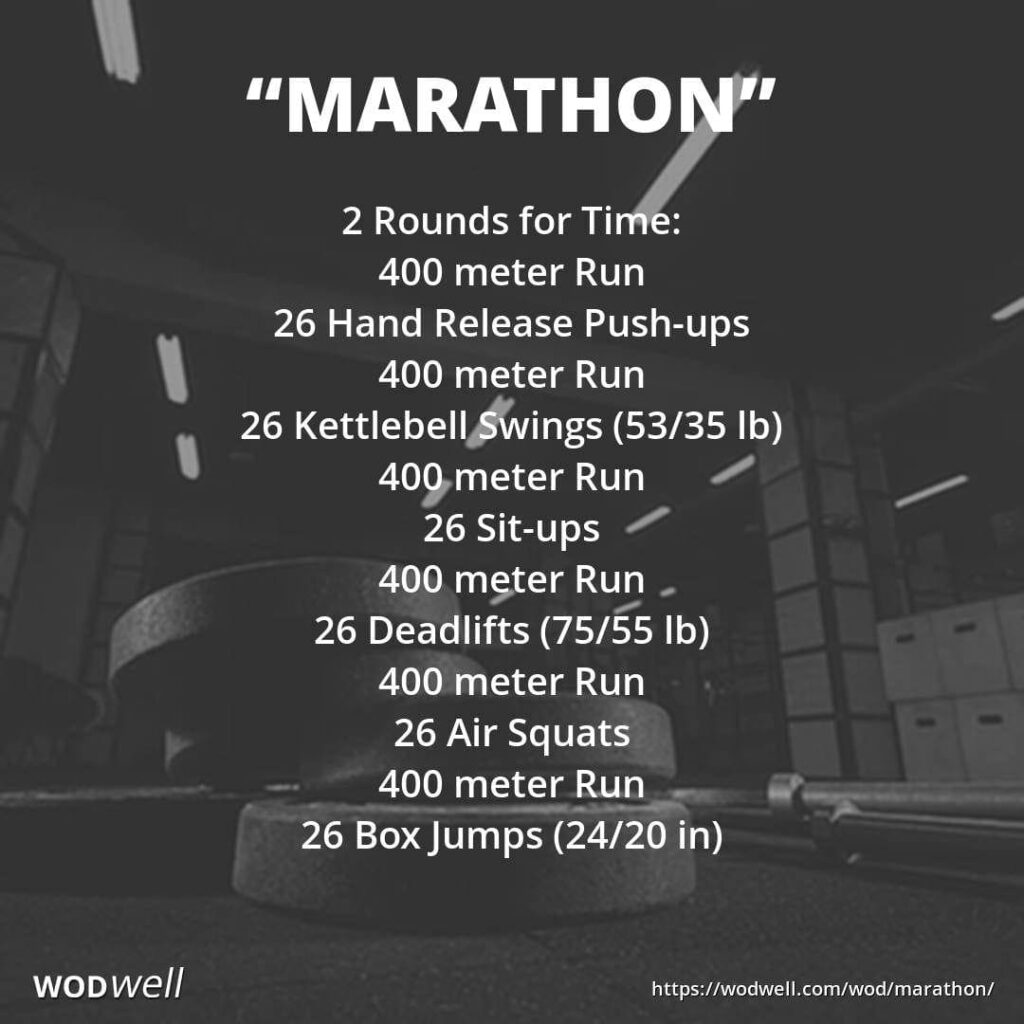What Does Metcon Stand For? An In-Depth Explanation
Metcon is a popular term in the fitness world, often used as an abbreviation for metabolic conditioning. This training method focuses on high-intensity workouts designed to improve the body’s efficiency in using energy systems. The meaning of metcon lies in its ability to enhance overall fitness by challenging the aerobic and anaerobic pathways, leading to increased stamina, strength, and power.
Metcon workouts are commonly incorporated into various exercise routines, including group fitness classes, personal training sessions, and sports training programs. By engaging in metabolic conditioning, individuals can experience improvements in cardiovascular health, muscular endurance, and body composition. Furthermore, metcon workouts are known for their efficiency, as they often require minimal equipment and can be completed in a short period.
In summary, the meaning of metcon revolves around the concept of metabolic conditioning, which entails high-intensity workouts aimed at enhancing the body’s energy system efficiency. The benefits of incorporating metcon into one’s fitness regimen are numerous, making it a valuable addition to any exercise routine.
Understanding the Science Behind Metcon Workouts
Metabolic conditioning, or Metcon, is a training approach that targets the body’s energy systems to improve overall fitness. The primary focus of Metcon workouts is to enhance the efficiency of the aerobic and anaerobic pathways, which play a crucial role in exercise performance and recovery.
The body’s energy systems consist of three primary pathways: the phosphagen system, the glycolytic system, and the oxidative system. Each system is responsible for providing energy during various exercise intensities and durations. By incorporating high-intensity interval training (HIIT) and strength exercises into Metcon workouts, individuals can effectively challenge these energy systems, leading to improved cardiovascular health, muscular endurance, and power.
Moreover, Metcon workouts promote excess post-exercise oxygen consumption (EPOC), which refers to the body’s increased oxygen intake following strenuous activity. This elevated oxygen consumption helps restore the body to its resting state, burning additional calories and enhancing fat loss. As a result, Metcon workouts offer a time-efficient and effective method for improving fitness and body composition.
In conclusion, understanding the science behind Metcon workouts highlights their value in enhancing the body’s energy systems and overall fitness. By incorporating Metcon into one’s fitness regimen, individuals can experience improvements in cardiovascular health, muscular endurance, and body composition, making it a valuable addition to any exercise routine.
How to Incorporate Metcon into Your Fitness Regimen
Integrating Metcon workouts into an existing fitness routine can be a seamless process when considering individual fitness goals and current exercise habits. To effectively incorporate Metcon into your regimen, follow these practical tips and advice:
-
Assess your current fitness level and exercise habits to determine the most suitable entry point for Metcon workouts.
-
Start with lower workout volumes and intensities, gradually increasing the challenge as your fitness improves.
-
Schedule Metcon workouts strategically within your weekly exercise plan, allowing for adequate recovery time between sessions.
-
Experiment with various Metcon workout formats, such as high-intensity interval training (HIIT), circuit training, or complexes, to find what suits your preferences and goals.
-
Consider incorporating Metcon workouts on non-strength training days to avoid overtraining and optimize recovery.
-
Monitor progress and adjust your Metcon workouts accordingly, focusing on continuous improvement and long-term development.
By following these guidelines, individuals can successfully incorporate Metcon workouts into their fitness regimen, reaping the benefits of improved cardiovascular health, muscular endurance, and body composition.
Designing Effective Metcon Workouts for Home and Gym
Metcon workouts can be tailored to suit various environments, making them an accessible and versatile option for individuals with different exercise preferences and equipment availability. Here, we provide examples of Metcon workout routines suitable for home and gym settings:
Home-Based Metcon Workouts
Bodyweight exercises are an excellent option for home-based Metcon workouts. Some examples include:
-
Burpees
-
Mountain climbers
-
Jumping jacks
-
Lunges
-
Push-ups
-
Plank variations
These exercises can be combined into high-intensity interval training (HIIT) sessions or circuit workouts, allowing for a challenging and engaging Metcon experience at home.
Gym-Based Metcon Workouts
Gym environments offer a wider range of exercise options, including equipment-based movements. Some examples include:
-
Kettlebell swings
-
Battle rope exercises
-
Rowing machine intervals
-
Medicine ball slams
-
Sled pushes and pulls
-
Olympic lifts, such as power cleans and snatches
These exercises can be incorporated into Metcon workouts, providing a well-rounded and challenging fitness experience at the gym.
In conclusion, designing effective Metcon workouts for home and gym settings is both possible and beneficial for individuals seeking to improve their fitness and overall health. By incorporating a variety of exercises and formats, Metcon workouts can be tailored to suit individual preferences and equipment availability.
Maximizing Results: Metcon Workout Techniques and Strategies
Optimizing Metcon workouts is essential for continuous improvement and long-term development. By employing proper techniques and strategies, individuals can enhance the effectiveness and efficiency of their Metcon sessions. Here are some techniques and strategies to consider:
-
Proper Pacing: Managing the intensity and duration of Metcon workouts is crucial for optimal performance. Adopting a sustainable pace, especially during high-intensity intervals, can help maintain form and reduce the risk of injury.
-
Exercise Selection: Choosing exercises that target various muscle groups and energy systems ensures a well-rounded Metcon workout. Incorporating a mix of compound movements, bodyweight exercises, and equipment-based exercises can challenge the body in different ways, promoting overall fitness.
-
Periodization: Structuring Metcon workouts into distinct phases or cycles can help prevent plateaus and promote progress. By varying volume, intensity, and exercise selection over time, individuals can continually challenge their bodies and avoid stagnation.
-
Active Rest and Recovery: Proper rest and recovery are essential components of any fitness program, including Metcon workouts. Allowing adequate time for muscles to repair and rebuild between sessions can enhance performance and reduce the risk of injury.
-
Continuous Learning and Adaptation: Staying informed about the latest Metcon techniques and strategies can help individuals refine their workouts and achieve better results. Regularly seeking new information and adapting workouts to personal needs and goals can promote long-term success.
In conclusion, maximizing results from Metcon workouts requires careful planning, execution, and adaptation. By incorporating proper pacing, exercise selection, periodization, active rest, and continuous learning, individuals can optimize their Metcon sessions and achieve their fitness goals.
Metcon Workouts vs. Traditional Cardio: A Comparative Analysis
Metcon workouts and traditional cardio exercises are both valuable components of a well-rounded fitness program. While they share some similarities, they also have distinct differences in terms of effectiveness, efficiency, and enjoyment. Understanding these differences can help individuals make informed decisions about their workout routines.
Similarities
Both Metcon workouts and traditional cardio exercises can improve cardiovascular health, increase stamina, and promote fat loss. They can also be adapted to suit various fitness levels and goals, making them accessible and versatile options for individuals with different needs and preferences.
Differences
Despite their similarities, Metcon workouts and traditional cardio exercises differ in several key aspects:
-
Exercise Selection: Traditional cardio exercises often involve steady-state activities, such as jogging, cycling, or swimming, while Metcon workouts incorporate a variety of high-intensity exercises, such as burpees, kettlebell swings, or rowing machine intervals.
-
Workout Duration: Traditional cardio exercises typically require longer durations to achieve desired results, while Metcon workouts can be completed in shorter timeframes due to their high-intensity nature.
-
Caloric Expenditure: Metcon workouts can burn a higher number of calories in a shorter period compared to traditional cardio exercises, making them an efficient option for individuals with limited time for exercise.
-
Enjoyment: Personal preferences play a significant role in workout enjoyment. Some individuals may prefer the rhythmic and repetitive nature of traditional cardio exercises, while others may find the variety and intensity of Metcon workouts more engaging and motivating.
In conclusion, Metcon workouts and traditional cardio exercises serve different purposes and can be adapted to suit individual preferences and goals. By understanding their similarities and differences, individuals can create a well-rounded fitness program that incorporates both types of exercises for optimal results.
Balancing Metcon and Strength Training: Achieving Optimal Fitness
A well-rounded fitness program often includes a combination of metabolic conditioning (Metcon) workouts and strength training exercises. Balancing these two components can help individuals achieve optimal fitness, enhance performance, and reduce the risk of injury. Here are some suggestions on how to create a balanced fitness program:
-
Alternate Metcon and Strength Training Days: Schedule Metcon workouts and strength training sessions on alternating days to allow for adequate recovery time between sessions. This approach also ensures that you are targeting different energy systems and muscle groups during each workout.
-
Incorporate Compound Movements: Combine Metcon workouts with compound strength training exercises, such as squats, deadlifts, bench presses, and pull-ups. These movements engage multiple muscle groups and can improve overall strength, power, and endurance.
-
Monitor Volume and Intensity: Properly managing workout volume and intensity is crucial for preventing overtraining and promoting long-term progress. Adjust the number of sets, reps, and exercise selection based on your fitness level, goals, and recovery needs.
-
Prioritize Recovery: Adequate rest and recovery are essential for optimal fitness gains. Ensure that you are getting sufficient sleep, practicing proper nutrition, and incorporating restorative activities, such as stretching, foam rolling, or yoga, into your fitness routine.
-
Listen to Your Body: Pay attention to your body’s signals and adjust your workout program accordingly. If you are feeling overly fatigued or experiencing persistent muscle soreness, consider reducing the volume or intensity of your workouts or taking an extra rest day.
In conclusion, balancing Metcon and strength training is essential for achieving optimal fitness. By alternating Metcon and strength training days, incorporating compound movements, monitoring volume and intensity, prioritizing recovery, and listening to your body, you can create a well-rounded fitness program that promotes overall health, performance, and endurance.
Metcon Workouts for Specific Sports and Activities: Tailoring Your Training
Metcon workouts can be adapted to enhance performance and endurance in various sports and activities. By incorporating sport-specific exercises and movements, individuals can improve their metabolic conditioning and better prepare for the unique demands of their chosen sport or activity.
Running and Endurance Sports
For runners and athletes participating in endurance sports, Metcon workouts can focus on building leg strength, power, and endurance. Examples of suitable exercises include:
-
Box jumps
-
Lunges with weights
-
Sled pushes and pulls
-
Stair sprints
-
High knees and butt kicks
Cycling and Other Pedaling Sports
Cyclists and athletes involved in other pedaling sports can benefit from Metcon workouts that target the lower body and core. Suitable exercises include:
-
Mountain climbers
-
Burpees
-
Jump squats
-
Medicine ball slams
-
Bicycle crunches
Team Sports
Team sports, such as soccer, basketball, or hockey, require athletes to perform short bursts of high-intensity activity followed by periods of rest. Metcon workouts for team sports can include exercises that mimic game-like situations, such as:
-
Agility ladder drills
-
Plyometric jumps
-
Tuck jumps and box jumps
-
Sprints with changes of direction
-
Kettlebell swings and snatches
In conclusion, Metcon workouts can be tailored to suit various sports and activities, providing athletes with the metabolic conditioning necessary to enhance performance and endurance. By incorporating sport-specific exercises and movements, individuals can create a well-rounded fitness program that supports their unique athletic goals.









